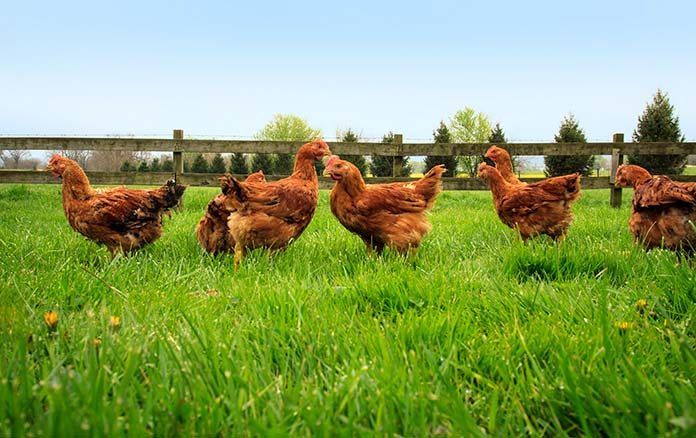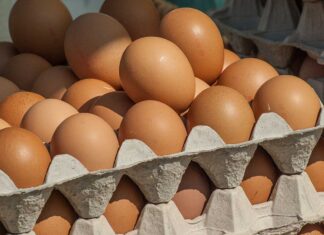
Interview with Paul Van Boekholt, Manager Global Marketing, Hubbard Breeders
Today markets are sensitive to animal welfare, meat quality and price concerns. In this regard, what do you think will be the future trend for slower growing breeds in Europe and in the world?
“This trend is mainly seen in the developed markets where consumer concern about how their food is produced has become more important. Animal welfare, use of antibiotics and meat quality are issues that initially came up in North West Europe, but now is also seen in other countries in the EU and in Northern America. Pressure from animal welfare associations on large retailers or food chains also played an important role. And now again, new initiatives are being put forward by several animal welfare groups. They might not all be effective, but it shows the ongoing concern within our modern society.
We do expect that this type of market will continue to grow in the EU, though it will remain to have a minority share of the total market. A recent study of Rabobank stated that this could grow from about 7% of the EU today to 20% in 2025. This seems quite a lot, but the market is changing that is for sure. To some (unknown) extend Northern America will also follow this trend mainly based on the Global Animal Partnership (GAP) initiative to which many large food chains and companies already have signed up for. This would come into play latest by 2024.”
Netherlands has been the leading country in developing the slow growing bird concept with their “Chicken of Tomorrow” brand for the retail, same as France had a leading role in the rural poultry farming. What is the secret of their success in your opinion?
“The initial reason for the development of the Premium markets is totally different for France and the Netherlands. For at least 60 years France has already been the leader in alternative markets through the production of Label Rouge and Certified chickens. The main driver for this was the well-known French cuisine responding to consumer demand for tradition, quality and taste. Whereas, in the Netherlands the main driver has been animal welfare, initially promoted by the Dutch government in the early 2000s asking the industry to look for a ‘farmers’ chicken’. This was really put into practice through the joined efforts of Hubbard, Wageningen University, Coppens Animal Nutrition and the retailers AH and Jumbo together with the Dutch Animal Welfare Association (‘Dierenbescherming’). This finally led to the introduction under the ‘Better Life (Beter Leven) 1 star’ concept of the Dierenbescherming of the 56-day extensive indoor system with in addition a covered range. The sales of chicken meat under this concept now covers about 20% of the retail volume in the Netherlands and the label is well recognised by the consumers.
However, the biggest change was made in 2013 when all the retailers decided together to replace all conventional fresh broiler meat to slower growing chickens. This was the result of a strong marketing campaign of the animal activist group ‘Wakker Dier’ (= awoken animal) which in 2012 targeted individual retailers asking their shoppers no longer to buy ‘plofkip’ (exploding chicken). This word ‘plofkip’ together with the strong marketing campaign and the common decision of the supermarkets completely changed the landscape at retail level within 3 years’ time. This is really a unique situation and we don’t expect this to happen in a similar way anywhere else in the world. As from 2017 all fresh meat sold in the Dutch supermarkets is of a slower growing breed.”
Managing slow growing chickens is quite different from fast growing birds. What are the crucial features a farmer should concentrate on to be successful and keep his business profitable?
“This is a combination of listening well to what the market really needs and achieving good technical results. The first important point to make and keep the business profitable is to assure that the production of Premium chickens is following market demand and it is not pushed into the market with overproduction. The simple fact that these chickens grow slower and need more feed for maintenance leads to higher cost of production. On top of slower growth many concepts add more value to the product through lower density, enriched environment, (covered) ranging areas, etc.
Because of the higher value of the carcass, it is also very important to sell the whole carcass or all parts of it at a premium price. This is the second key to the success of the introduction of premium chickens into the market. To be able to market the premium products in a good way, it is crucial to have a good branding strategy. In this way your product is no longer a commodity product and you are able to tell the consumers the story behind it. You need to be able to highlight the differences and what value has been added to final product to be able to explain the consumers why they have to pay more for it.
And then of course good technical management remains the basis of any business in growing healthy, good quality chickens with the best animal welfare and the lowest or no use of antibiotics. The ‘eye of the farmer’ is always very important; though this kind of chickens is very robust and easier to manage, they still need the best care of the farmer to achieve the best technical results.”
Today we see various markets requesting different products. How can new slow growing breeds help diversify the chicken meat offer?
“At Hubbard, we have the largest range of Premium products and through the right choice of combination of the Hubbard Premium breeder female and Hubbard Premium breeder male you can cover all the different market needs in terms of genetic growth rate, phenotype (feather colour, feathering, skin colour), etc. So, this is really giving our customers the choice for diversification to respond to the demand for a superior quality, changes in consumption patterns and the increased demand for robustness, animal welfare, health, conformation and meat quality. The Hubbard JA57, JA87 and Redbro M are the main breeder females being used and combined with either the Hubbard Slow Growth, Intermediate or Conventional breeder males.”
Which are Hubbard’s innovative slow growing products and what performance they offer?
“Hubbard has been selecting slow(er) growing broiler breeds for more than 50 years. Over the last years Hubbard has intensified the R&D for its Premium Product Range following the latest trends. And again, in the coming years we are putting a lot of additional investments into our Premium R&D as the key objective of Hubbard is to be ‘the natural choice’ to bring the ‘taste with a difference’ to more people in the world in the most efficient way. We have the largest product range able to supply all existing or upcoming markets ranging from organic, Label Rouge, Certified, free range, extensive indoor to a ‘standard plus’ chicken. And of course, we keep watching new developments in the market to make sure we are ready for it all the time.”
















